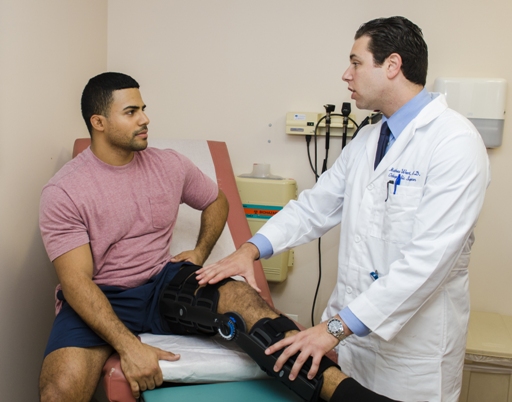New York Methodist Hospital’s Sports Surgeons Add Breakthrough Procedures
May 8, 2014

Matthew Wert, MD, director of sports medicine at New York Methodist Hospital.
Orthopedic surgeons at New York Methodist Hospital (NYM) have recently added several breakthrough procedures for cartilage repair, giving athletes with formerly career-ending injuries a new lease on their sporting lives. Where once articular cartilage damage meant that a patient's years as an athlete would grind to a halt, advanced osteochondral autograft or allograft transplantation (OATS) procedures performed at NYM are enabling a high percentage of athletes to reach peak levels again.
"Articular cartilage is the smooth tissue that covers the ends of the bones at a joint, such as the knee," said Matthew Wert, MD, director of sports medicine at the Hospital. "This cartilage is five times more slippery than ice, and allows an athlete's bones to glide over each other with very little friction. When that cartilage is damaged either through normal wear and tear over time or through injury, the joint surface may no longer be smooth. Moving bones along this damaged cartilage is difficult and causes pain, and can also lead to arthritis in the joint. Articular cartilage does not heal itself well, which is why surgical techniques such as OATS can truly be life-changing. Restoring articular cartilage relieves pain, allows better function, and studies have shown that through these procedures, over 90 percent of patients are able to return to their sports."
During an autograft procedure, healthy cartilage tissue is taken from an area of a patient's bone that does not carry weight, and is not susceptible to the negative effects of cartilage damage. The healthy tissue is then matched to the surface of the damaged joint and solidified in place, restoring a smooth and undamaged cartilage surface. While autograft procedures are ideal for the repair of smaller damaged areas in the joint, a different procedure called an allograft may be more beneficial for larger defects. Allografts involve using larger sections of tissue taken from a donor. As with autografts, the tissue is shaped to fit the exact contour of the damaged tissue.
"The number of patients who come to us for cartilage repair and restoration procedures continues to increase," said Henry Tischler, MD, chief of orthopedic surgery at NYM. "That is because our goal isn't just to treat athletes who have sustained injuries, but to help those athletes return to top performance again. We're at the 'razor's edge' of this field, and that's where we plan to stay."
Media Contact:
Media Relations 718-780-5367



